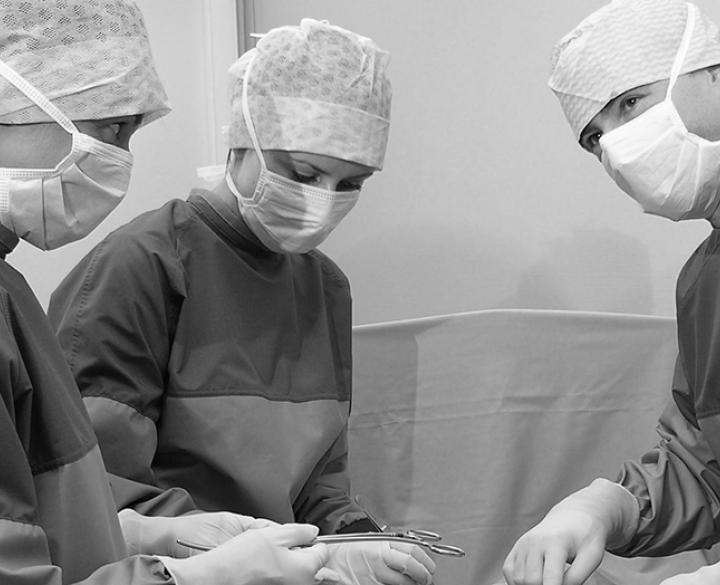The conformity with the Medical Device Regulation (EU) 2017/745 depends on the type of medical device and more in particular on the class to which it belongs. There are four different classes of medical devices, the most severe one being class 4 for those medical devices including the highest risk of contamination.
Textiles used in operating theatres belong to class 1 (low risk) of the medical devices and are conform if they comply with the different parts of EN 13795 - Surgical drapes, gowns and clean air suits, used as medical devices for patients, clinical staff and equipment - General requirements for manufacturers, processors and products, test methods, performance requirements and performance levels.
This standard has been written in the spirit of the European directive and aims at preventing the transfer of infections between the medical staff and the patient during surgical operations and other invasive interventions. At the same time, it is a fight against nosocomial (hospital related) infections.
Moreover, the standard wants to guarantee the same safety and performance levels for all products, disposable or reusable articles alike, and this during their entire product life.
EN 13795 deals with (woven or nonwoven) surgical drapes, gowns and clean air suits, used as medical devices, hospital staff and equipment. The standard defines the requirements and corresponding test methods.
The minimum values account for the circumstances of the surgical operation. Therefore they distinguish between products for standard performances and products for higher performances on the one hand and between the critical and less critical zones of the product, on the other hand.
The critical zone of a product has a greater chance to be involved in the transfer of infection carriers on the operation site or on the invasive zone or vice versa. For example: the front piece and the sleeves of surgical gowns are in the immediate proximity of the operation site.
A product for standard performances or high performances is defined in function of the exposure to biological or other fluids, to mechanical pressure or to the duration of surgical operation
Which properties are evaluated according to EN 13795
- Tensile strength - dry and wet - EN 29073-3:1992
- Burst strength - dry and wet - EN 13938-1
- Resistance to fluid penetration - EN 20811
- Cleanliness – microbial - EN ISO 11737
- Cleanliness – particulate matter - ISO 9073-10
- Linting - ISO 9073-10
- Resistance to microbial penetration - dry - ISO 22612
- Resistance to microbial penetration - wet - ISO 22610
Protection of the patient versus protection of the medical staff
Standard EN13795 is aimed at the protection of the patient; this determines the direction in which the sample is brought into contact with the contaminating agent during the test.
If the manufacturer also claims the protection of the medical staff the surgical gown will no longer be considered as a medical device but as a PPE (personal protection equipment).
In this case, the product has to comply with the corresponding PPE Regulation 2016/425 and product standard EN14126: Protective clothing. Performance requirements and tests methods for protective clothing against infective agents
Additional properties
Standard EN13795 mentions some interesting additional properties such as "liquid control" or "adhesion properties".
Centexbel offers the following test methods to measure the comfort properties of products:
- ISO 11092 & EN31092: Skin model
- EN ISO 15831 & ASTM F2370: Thermal manikin
- ISO 9237: Air permeability
- ISO 811: WP resistance to water
In additon to the tests assessing the conformity of the product, the European regulation introduces the notion of risk analysis by proposing the following tests:
- non-toxicity of the medical device according to ISO 10993
- measurement of the electrical risk according to ISO 2878 (BS2050) and EN 1149
- Protection against laser beams
- ISO 11810-1: primary ignition and penetration
- ISO 11810-2: secondary ignition
Send your samples to
Centexbel - Microbiological Lab
Rue du Travail 5
4460 Grâce-Hollogne
Belgium
+32 4 296 82 00
g-h@centexbel.be




